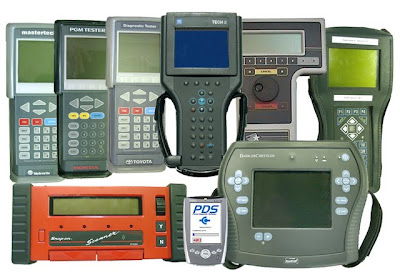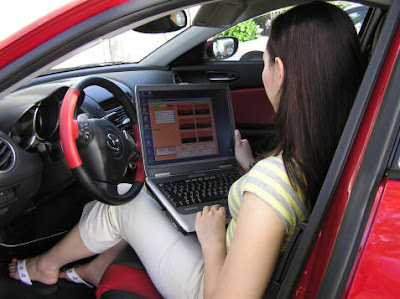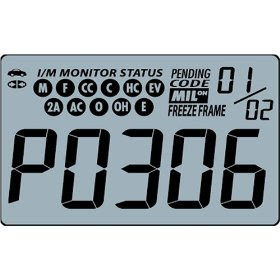
Sunday, September 19, 2010
Tuesday, September 7, 2010
Scan Tools

 Using A Scan Tool
Using A Scan Tool ssue and repair it.
ssue and repair it.Monday, September 6, 2010
Scan Tool Observations
Which Vehicle Are you using? Land Rover
Which Scan Tool are you using? Auto Boss
2.2 What different functions are available on the scan tool to examine the CAN system?
Primary Ignition, secondary Ignition, Multimeter, DSO, Engine Analyser
2.3 List the different systems that are controlled by CAN? (note which are high speed and which are low speed)
High
ABS/ TCS/ Engine Control/ EPS
Low
Tv, Windows, Body Control
CAN Multiplexing worksheet
1.1 Locate the Range Rover or other suitable vehicle with easily accessible CAN system twisted wires. Which vehicle do you have? (Year, Make, Model)
2001 Landrover
1.2 Locate a twisted wire pair. Describe where the wires are located. The Twisted Wire Pair were located inside the engine bay on the Hydraulic Control Unit
1.3 Record the waveform of one of the wires below. ("make sure your time is small enough so you dont have aliasing")
Colour of wire: Yellow
Time per division: 2 Seconds
Voltage per division: 0.5V

1.4 Record the waveform of the other wire.
Colour of wire: Black
Time Per Division: 20ms
Voltage per division: 1V
1.5 What is aliasing? Describe it: When a digital image is viewed, a reconstruction-also known as an interpolation-is performed by a display, and by the eyes and the brain. If the resolution is too low, the reconstructed image will differ from the original image, and an alias is seen. Aliasing can be caused either by the sampling stage or the reconstruction stage; these may be distinguished by calling sampling aliasing prealiasing and reconstruction aliasing postaliasing
1.6 How do you know these waveforms are not alisaling?
Because they are symmetrical when placed together, and this is what it should like.
1.7 In the 1.3 Waveform above, what is the main voltage on the line? 2.5V
What is the other voltage on the line, when the voltage is pulled up or down to "talk"?
1.8 In the 1.4 Waveform above, what is the main voltage on the line? 1.5V
What is the voltage on the line, when the voltage is pulled up or down to "talk"?
1.9 Observe the signals in 1.3 and 1.4 with a voltmeter. Compare it with DC volts or AC volts setting . Which setting would tell you if the signal is switching. Explain. DC Would tell me if the signal is switching because I would get a straight line when it is either on, or off, while analogue will give me a curvy line.